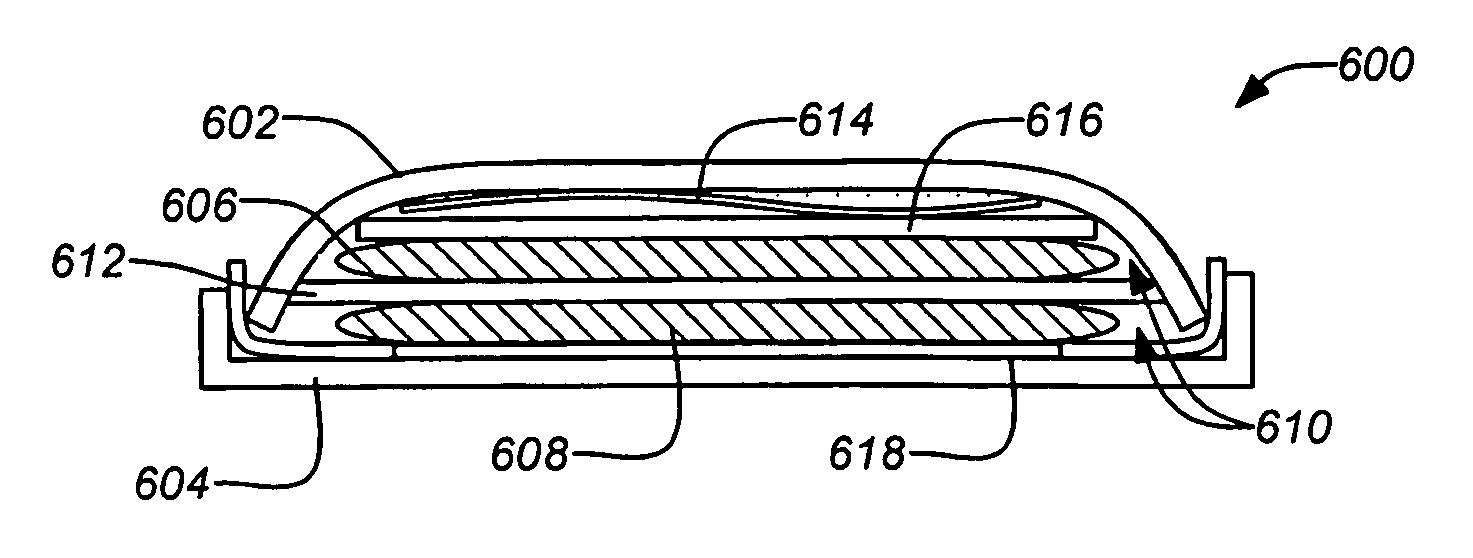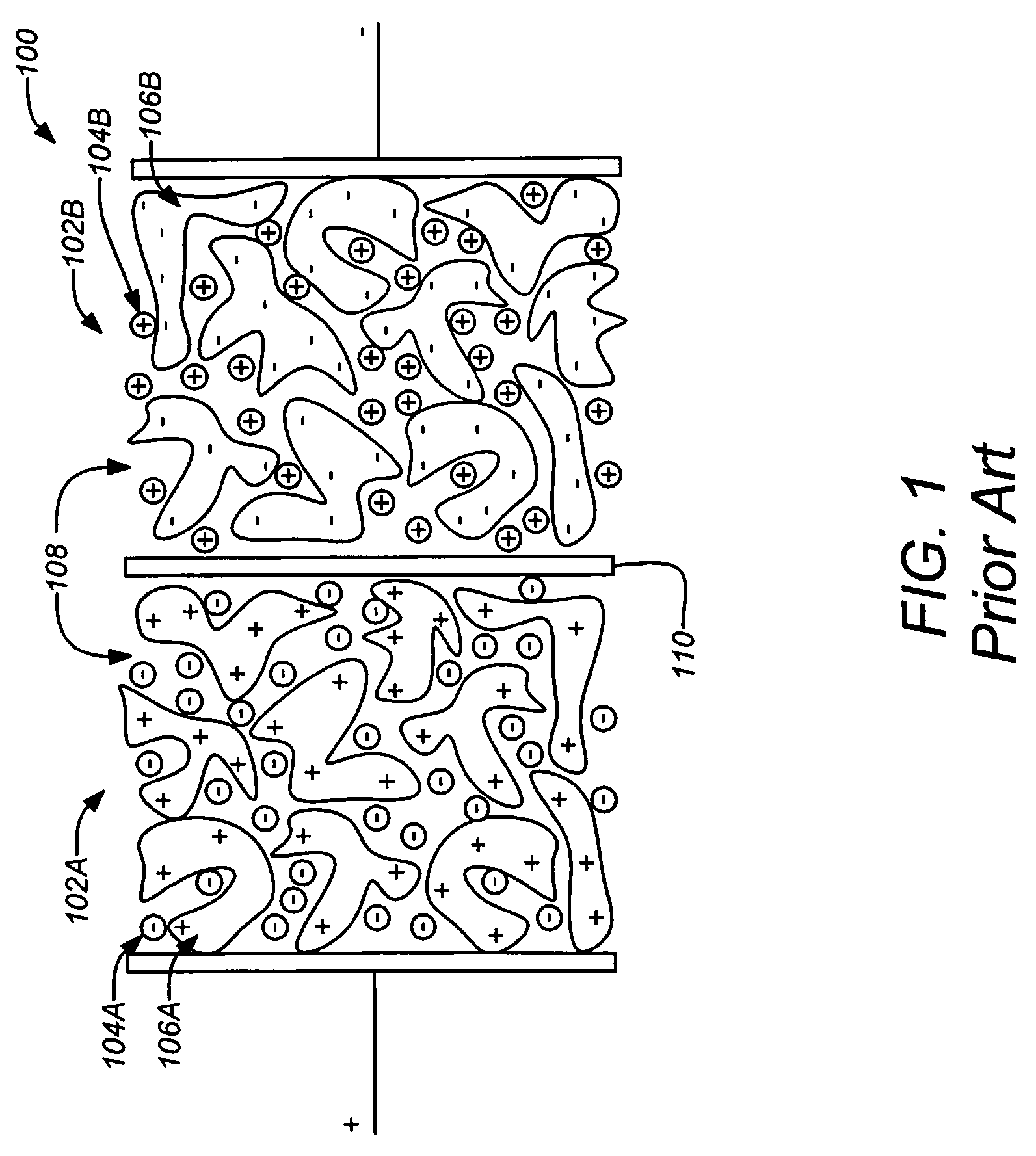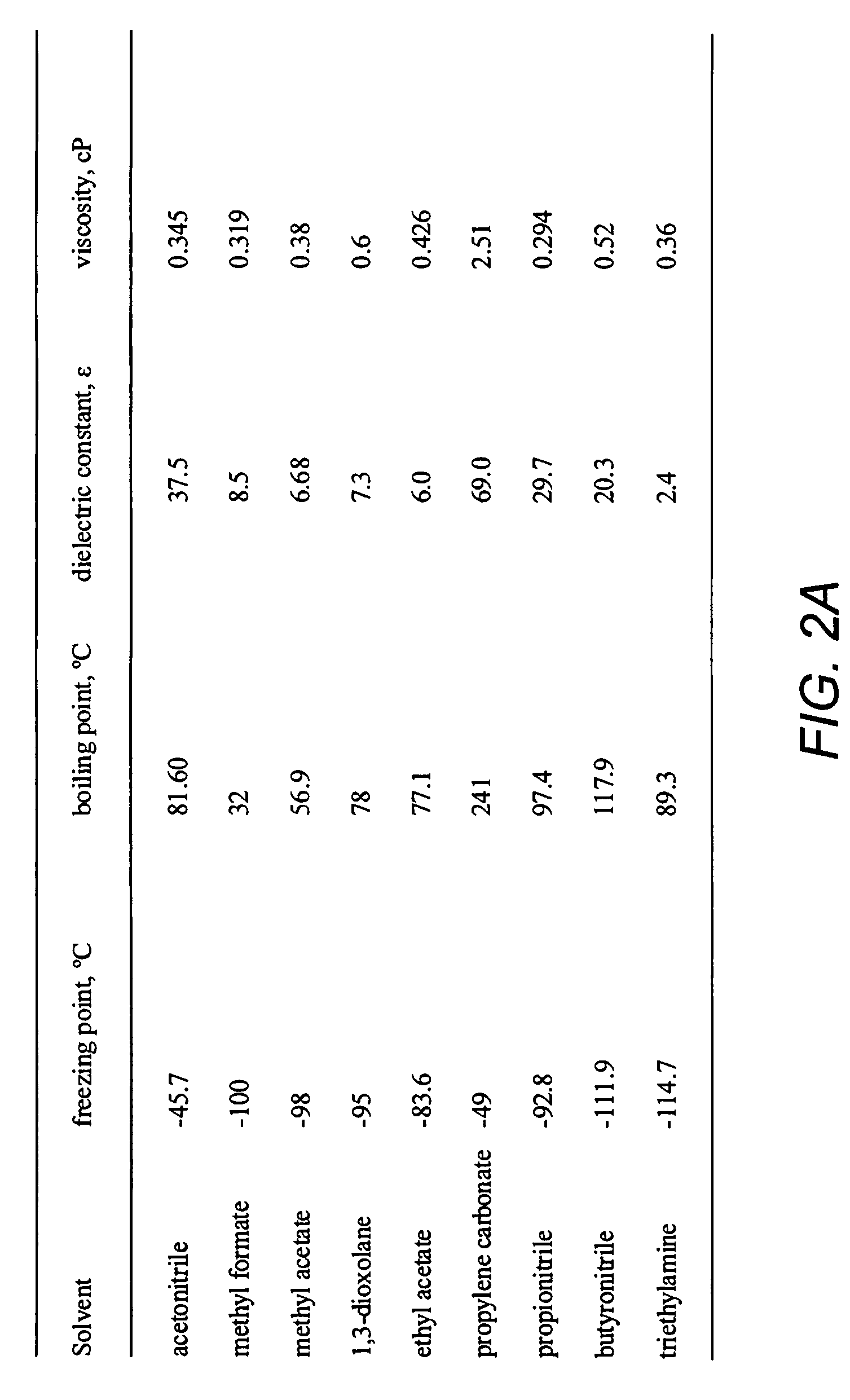Low temperature double-layer capacitors
a capacitor and low temperature technology, applied in the direction of liquid electrolytic capacitors, casings/cabinets/drawers, electrical apparatus casings/cabinets/drawers, etc., can solve the problems of low temperature storage of electrical energy and delivery of electrical power, difficult to achieve, and other power sources such as radioisotope thermoelectric generators cannot provide high power levels. , to achieve the effect of reducing the melting point of the base solven
- Summary
- Abstract
- Description
- Claims
- Application Information
AI Technical Summary
Problems solved by technology
Method used
Image
Examples
Embodiment Construction
1. Overview
[0031]As previously mentioned, embodiments of the invention are directed to non-aqueous double-layer capacitors having an electrolyte system that operates below −40° C. and delivering useful cell characteristics such as capacitance and low ESR at these lower temperatures. This work may lend a greater understanding of fundamental cell processes (such as current leakage and the nature of the double layer), as well as lead to a practical device for low temperature operation in future space exploration robotic missions. Extension of the operating temperature to at least −55° C. (the required lower operating temperature limit for most space rated electronics) would make these components more appealing for space applications.
[0032]Some potential space applications for such double-layer capacitors include augmenting high specific energy, low temperature primary battery cells or in designing hybrid capacitor-secondary battery cell systems to extend cell life in robotic space miss...
PUM
| Property | Measurement | Unit |
|---|---|---|
| temperatures | aaaaa | aaaaa |
| temperature | aaaaa | aaaaa |
| temperature | aaaaa | aaaaa |
Abstract
Description
Claims
Application Information
 Login to View More
Login to View More - R&D
- Intellectual Property
- Life Sciences
- Materials
- Tech Scout
- Unparalleled Data Quality
- Higher Quality Content
- 60% Fewer Hallucinations
Browse by: Latest US Patents, China's latest patents, Technical Efficacy Thesaurus, Application Domain, Technology Topic, Popular Technical Reports.
© 2025 PatSnap. All rights reserved.Legal|Privacy policy|Modern Slavery Act Transparency Statement|Sitemap|About US| Contact US: help@patsnap.com



